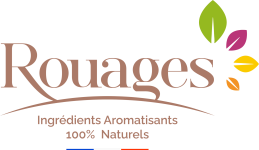Natural flavours are used everywhere. For consumers, the term natural flavouring implies that only natural ingredients are used. But this is not always the case. Natural flavourings may contain a chemical base. Our engineers explain.
What is the definition of a natural flavour?
Natural flavouring is defined as a substance or mixture of substances used to add, modify or intensify a specific odour and/or taste to foods, from natural raw materials. Flavours can introduce new flavours/smells or enhance existing ones. They are added to food in very small quantities.
Is the natural flavour just the flavour or does it contain other products?
A natural flavour consists of a flavouring part – which gives the flavour to the flavour – but also another part: the base, which may not be natural. The base is made up of a solvent, a carrier and additives. Carriers and solvents are used to extract, dissolve, disperse and facilitate the use of aromatic compounds in recipes. The most common are: water, alcohol, propylene glycol, glycerine, oil, maltodextrin and gum arabic. Some, like propylene glycol, are chemicals.
What legislation governs the use of natural flavourings?
The use of natural flavourings is governed by European Directive 1334/2008 of 16 December 2008: their manufacture and use. This directive stipulates that there are two designations for natural flavourings. For example, natural strawberry flavouring and natural strawberry flavouring do not have the same composition.
What is the difference between a natural strawberry flavour and a natural strawberry flavour?
According to Directive 1334/2008, a natural flavouring consists of 100% natural flavouring. Strawberry natural flavouring and strawberry natural flavouring do not contain the same ingredients. They are two different products.
In a natural strawberry flavouring, at least 95% of the flavouring part of the product must come from the source mentioned, in this case the strawberry. The remaining 0 to 5% must be made up of natural flavouring agents. These agents may therefore come from a source other than strawberries.
In the product called Strawberry natural flavour, the source of the flavour can come from strawberries but also from other natural sources that create the strawberry flavour (such as wood, for example). These products must be 100% natural flavouring agents – for the flavouring part.
What is the composition of a natural flavour?
Here is an example of a classic label: composition: vegetable fibres, mono propylene glycol, natural flavouring substances, flavouring preparation. Colour: none – preservative: none – limited substances: natural pulegone < 0.009 mg/kg. Here we find a chemical compound: mono propylene glycol.
Why is mono-propylene glycol used in natural flavourings?
In flavourings, mono-propylene glycol is a chemical used as a solvent to dissolve aromatic substances. It is not considered dangerous to health if it is not used in large doses. But it is still a chemical.
What is the difference between a natural flavour and a flavouring ingredient?
No chemicals are used in a flavouring ingredient. The flavouring ingredient produced contains only 100% natural ingredients. The extraction and concentration process developed ensures that the original taste of the fruit, spice or vegetable is preserved, as well as its smell.
Why should I use a 100% natural flavouring ingredient in my recipes rather than a natural flavouring?
To offer consumers a totally natural, chemical-free product. The word “flavouring” makes today’s consumers suspicious. With Rouages products, you can be sure of a 100% natural flavouring ingredient. We are Clean Label: we appear on your product labels with the words “infusion of…”.
What technique is used to preserve the taste and smell of the natural product?
An infusion process is used which both extracts the flavours from the plant ingredients and concentrates them. Rouages calls its flavouring ingredients : Intense infusions.
What does the label say if we use a flavouring ingredient?
Instead of natural aroma, you’ll see “Infusion de ….”. Of course, for plants subject to restrictions, you’ll note the usual precautions for use, which we’ll let you know about.

